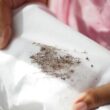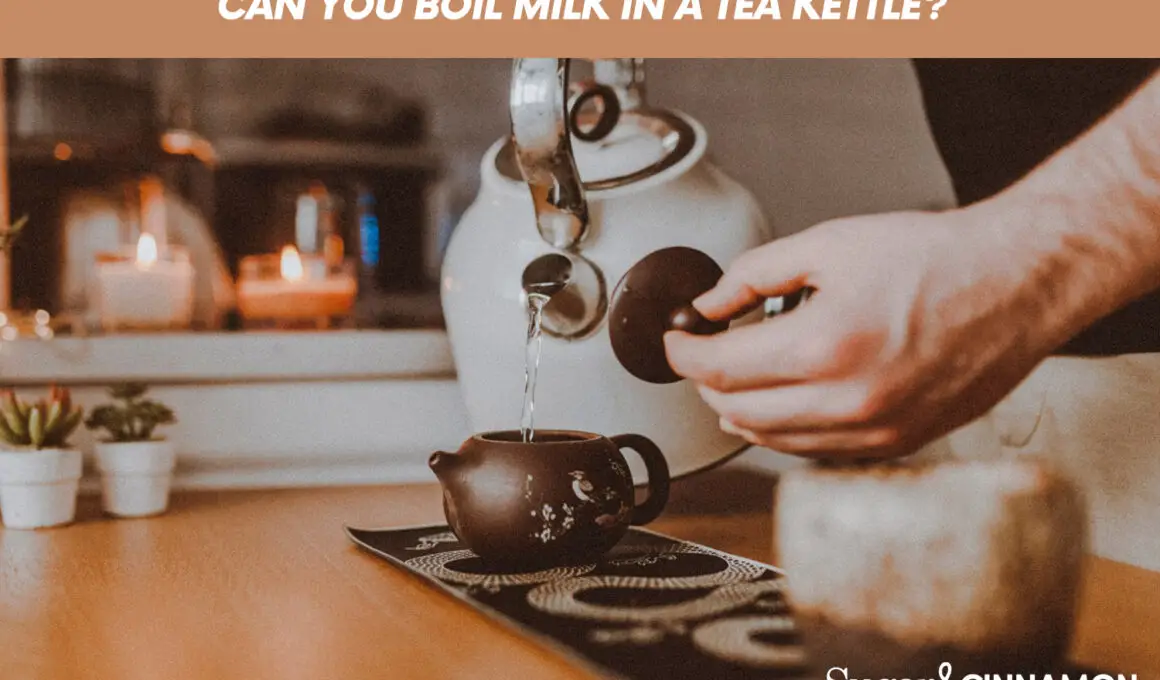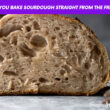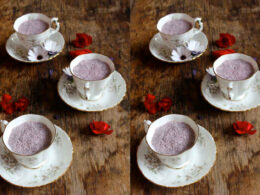Table of Contents Show
Apart from boiling water and tea, what else do you do with your tea kettle? The primary purpose of the kettle is to boil water.
Over time, there has been the unending question on the use of a kettle for something else such as boiling milk. Can you boil milk in a tea kettle? Is it safe or damaging to your kettle? We did some research and here is all you need to know.
Yes, you can boil milk in a tea kettle, but there are a few things to keep in mind. It is preferable to boil milk in a non-electric kettle because the heating mechanism in an electric kettle can get milk-coated and is difficult to clean. It can also cause foam and smoke to form in the kettle.
Boiling milk in a tea kettle has a bad tendency of destroying the kettle. Unlike boiling water, the process of boiling milk is completely distinct and not at all similar to that of boiling water. Fats, proteins, and water are all found in milk.
When boiling milk in a tea kettle, a coating of fat and proteins forms on top of the liquid, making it harder for steam to escape. The milk boils over as a result of the steam building up. If the kettle has no auto-turn off, the heating system continues to heat the milk due to the kettle’s inability to turn off, and the milk will soon begin to smoke.
The high heat causes the milk to coat the heating element, which acts as fortification for the heating unit, making it hotter as it continues to burn. This has the potential to both ruin the circuit and set the kettle ablaze.
Boiling milk in an electric kettle will result in a burnt, messy kettle that, in the worst-case scenario, will be unusable for tea.
Problems Caused By Boiling Milk In A Kettle
Here are some potential issues you may run into when boiling milk in your tea and how to navigate them.
- Milk, unlike water, when it is heated does not evaporate; instead, it spills over and causes a mess. This occurs as a result of the presence of fat and protein in the milk. When the milk is boiled, the fat and protein separate from the water, and the milk spill over, instead of evaporating. This spillage can cause a short circuit when it comes in contact with the kettle’s electric system.
- If your kettle does not have an auto-turn-off feature, it may be difficult to keep your milk from burning. Electric kettles with auto-switch-off features often turn off when the steam reaches the top of the pot; however, if neither is in use, the steam begins to flow down the kettle and eventually burn. This can also harm your kettle’s interior components.
- Because of the protein and fat in milk, when it is cooked, it creates a sticky residue. When this residue sticks, cleaning and scraping the strains at the bottom and sides of the electric kettle becomes quite tough. This residue can not only be difficult to clear, but it can also destroy the kettle’s electrical circuits. The residue in the kettle’s nooks and crannies also makes it difficult to boil water since it taints the water.
- Using a kettle to boil milk can result in a stinky kettle. The smell of burns and the unwashed part of the kettle will give the kettle an unpleasant odor and taste.
How To Boil Milk In A Kettle
This doesn’t mean boiling milk in a kettle is prohibited. If you want, you can go ahead with it, however, there are ways to go about it, to ensure that your kettle does not become unusable in the closest future. The following ways are the two best ways to boil your tea in a kettle.
Step 1
- Pour your milk into the kettle and leave the lid open. Ensure you pour only a smaller amount of milk into the kettle; this will give the milk more room to flow.
- Turn on the kettle but keep an eye on it; this will prevent anything from going wrong.
- Once the milk starts to heat, stir continuously and evenly. Stirring the milk prevents it from turning over.
- Once the milk is boiled, switch off the kettle and allow it to cool off for a bit, and then turn it into your cup.
Step 2
- Take a steel container, with a lid and put your milk in it.
- Add some water into your kettle and place the container with milk into the kettle.
- Cover your kettle with the lid, plug in your kettle and turn the heat on. Ensure that the kettle stays on for about 15 minutes.
- After 15 minutes, turn off the kettle and remove the container, gently. Be reminded that the steel will be very hot, so you will be required to carry it gently to avoid spilling your milk.
- After this is done, you can transfer your milk to a cup or jug.
How To Clean The Kettle After Boiling Your Milk
You must clean your kettle thoroughly after boiling your milk in it. This will prevent odor and taste and also make your kettle usable for a long time.
The following are some ways to clean your kettle to prevent a foul odor.
- Take some water and vinegar of the same proportion and mix them. Pour this mixture into the kettle halfway and boil.
- With minimal residue, this will keep the kettle clean. However, if the residue in your kettle is a lot, then you will need to increase the amount of vinegar in the kettle.
- Boil the mixture for a long time and then put it off. Keep the mixture in the kettle for about 20 minutes and then pour it out.
- After then, make use of a non-metallic sponge to clean the inside. Ensure you do not scrub the heating element at the bottom of the kettle.
- Rinse the kettle properly to keep the vinegar smell off, then clean dry with a dry cloth.
- If you have more residues in your kettle, repeat the exercise until your kettle is clean.
Can I Make Loose Leaf Tea In A Kettle?
You can make your loose leaf tea in a kettle; however, you shouldn’t do that. Instead of making them in a kettle, you should make use of a teapot.
Final Thoughts
Milk in a kettle does not sound so damaging; however, it can cause a lot of harm to your kettle and make it unusable for a long time.
If you, however, intend to still boil your milk in a tea kettle, you should follow the process above on how to make it and ensure you clean your kettle to prevent it from keeping residues in it.
Continue reading:
- How Long Does Sweet Tea Last In The Fridge?
- Is Black Tea Bitter? (What You Should Know)
- What Does Chai Latte Taste Like?
- Is Tea Vegetarian? What You Should Know













